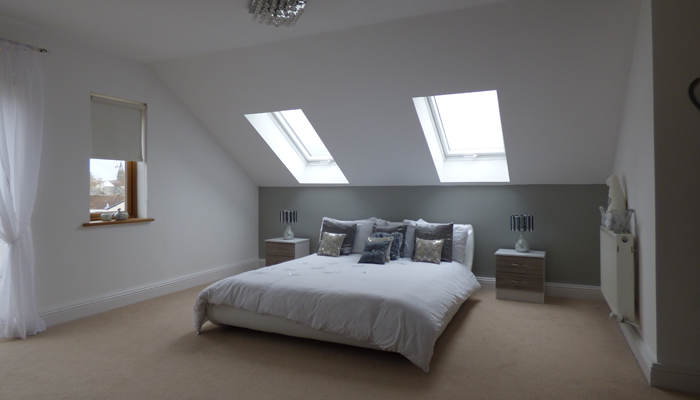An increasing number of house owners are adding value to their properties by investing in a loft conversion.

Not only do loft conversions increase the amount of useable space in a property, planning regulations mean they are now classified as permitted development.
This means planning permission is not required for a loft conversion that adds less than 40 cubic meters to a terrace house or under 50 cubic meters to a detached or semi-detached home.
However, it should be remembered that your local authority’s planning department must give its consent to your development plans, which can be refused if a neighbour objects.
But before you submit your plans, here are four factors to consider when thinking about a loft conversion.
Available space

Most lofts can be converted, but there are three things you need to check to be sure. The most important is the internal height of the existing loft, which needs to be a minimum of 2500mm from the top of the ceiling joist to underneath the ridge board in the apex.
The second factor to look at is the pitch – or angle – of the roof. As a rule of thumb, it should be possible to complete a loft conversion without additional building work if the roof’s pitch is 30 degrees or more.
The next consideration to take into account is the existing loft space’s footprint. There’s little point converting a space that has walls under 5500mm from side to side or less than 7500mm front to back.
Does the floor need reinforcing?
Remember that the floor of your loft conversion will double up as the ceiling of your first floor.
Therefore, it’s wise to pay close attention to the strength of the supporting beams on your second floor. If they cannot properly hold the weight of a loft conversion, you will need to look at reinforcing the floor, which will require additional building work and add a considerable amount of cost to the project.
Wiring the electrics
Installing proper wiring into another room in the house, including making it safe from potential leaks and well organised is something that only a licensed professional should do.
Accessibility
When you are using a loft simply for storage, the ladder in the ceiling hatch works just fine for an entrance and exit.
But when converting a loft into a living space, it will need to have a proper fire exit, meaning it should be easily accessible from the floor below.
Make sure that the accessibility of the loft conversion is taken into account when you are planning the conversion in order to avoid insurance policy nightmares.
When done right, a loft conversion is a fantastic way of adding value to your property without really changing the external aspects of the property. A loft has a lot of potential, a new bedroom, a home office, perhaps even a games room.
However, it is important that it is both safe and accessible from a health and safety point of view. When looking at potential loft conversions, make sure you talk to a constructions expert who will be able to give you advice relevant to your specific situation.
Article provided by Mike James, working together with Midlands-based specialists Greyline Construction.




